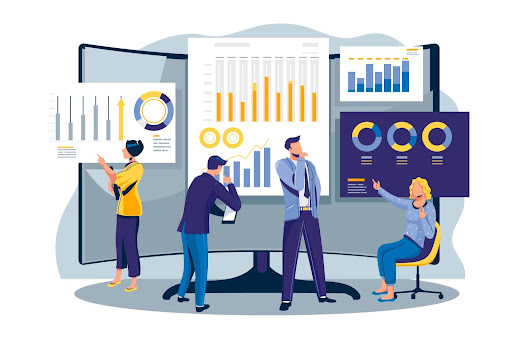Today’s businesses rely heavily on data to help them make wise decisions about their customers, products, strategies, and overall business health. However, even if there is a plethora of data, it is useless if your company cannot access it or use it to make decisions. This is fueling the demand for data democratization, which involves making information accessible to everyone, allowing anyone to utilize it on any device of their choice, and without the need for specialized knowledge or equipment.
Data democratization enables data to safely go from a select group of analysts’ hands into the hands of the general public inside an organization. If done properly, data democratization will propel businesses to new performance heights. It is difficult to reject the utopian idea of data democratization. At its essence, data democratization aims to address the everyday data problems that people encounter. And even the greatest data teams struggle to satisfy the expectations of multiple teams because of the rate of change in the data landscape and people’s requirements.
WHAT IS DATA DEMOCRATIZATION?
Making digital information available to the typical, non-technical user of information systems without involving IT is a process known as data democratization. It serves as the basis for self-service analytics, a method that enables non-technical users to collect and analyze data without the need for assistance from a data steward, system administrator, or member of the IT department. Organizations can stay clear of the traps of the past by implementing best practices for data democratization. A Digital transformation agency adheres to the following guidelines if it wishes to effectively democratize data:
Encourage staff to feel at ease asking or talking about data-related issues
Give everyone in the organization access to the necessary tools so they can deal with data.
Consider democratization as a continuous process that might necessitate a change in organizational culture
WHY IS IT BECOMING VITAL?
1] Democratizing Data Is Fundamental
Data is a crucial source of value for businesses and a critical differentiator among them. Silos get broken down through data democratization, allowing for quicker responses, reduced costs, and more creativity. Additionally, it results in better customer service. Studies show that organizations can gain four important advantages from data democratization:
- better and quicker judgments
- increased effectiveness
- higher levels of client satisfaction
- increased profits
These novel applications of democratized data include resource management analytics to prioritize and plan technological resources, social analytics to comprehend market impacts, and estimate contractual losses for services.
2] Democratization of data is unavoidable.
In a short while, zettabytes of data will become commonplace. A zettabyte is 270 bytes, a quantity that is nearly incomprehensible to humans. The amount of data produced by our sensors, computer devices, and cell phones are continuing to expand exponentially. To successfully inspect, analyze, modify, and extract value from all of this data, cloud computing and AI will be the future need.
3] Democratization of Data Is Fair
The democratization of data promotes more accountability, trust, and access. Access to public sector data and the resources to evaluate, report on, and even deconstruct this data by citizens are both advantageous. Governments should make it a policy aim to enable citizen data scientists since doing so ensures that the populace is better informed and that service gets improved.
CHALLENGES
1] Restricted Access
The issue of not knowing whether or not you can trust the data is in relation to the issue of not being able to discover it. The conventional approach to handling this is to set up a top-down governance framework in which IT controls data management, assures data integrity, creates business rules, and conducts analysis.
Access controls are often made available to established administrators. However, they prevented the free flow of information required to move with agility by establishing a barrier between those who controlled the data, insured data quality, and performed the analysis and the business users who needed to act on it.
2] Silos of data
Businesses have had some success transferring their data to data lakes, data warehouses, and business intelligence platforms. The storage issue is now resolved. However, it is challenging for a company; like a digital product engineering company working for different clients, to create a single source of reliable data that everyone can rely on when data gets housed in various silos. The creation of a data inventory is much needed.
3] Faulty tooling
The self-service analytics environment in which we now live just wasn’t intended for by the business intelligence and data analysis technologies that are currently available.
4] Culture of the company discourages collaboration.
Organizations are traditionally divided into various departments, each of which is in charge of a separate task. This outdated culture needs should get replaced with one that emphasizes sharing data and using it to foster greater collaboration and decision-making if we are to reap the rewards of data democratization. Cultural change, however, is not simple.
It is a significant endeavor that engages and persuades everyone, but that must get driven from the top. Again, in order to encourage wider usage, employees and other potential users must all be well-informed about the advantages that data provides to them and how it may empower them.















